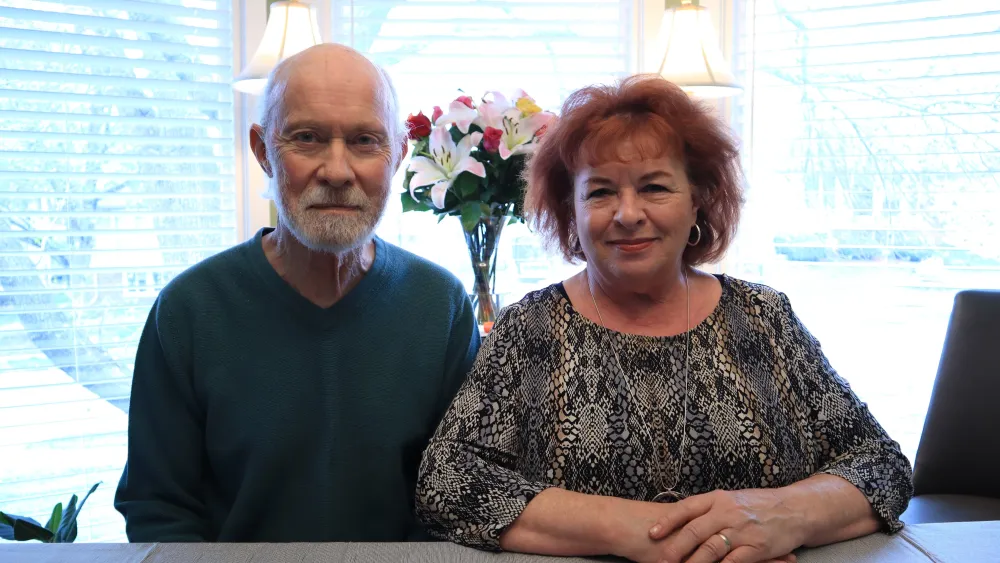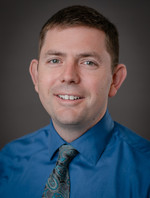





Heart Health
Omaha Man Gets 2nd Chance After Likely Heart Attack He Didn’t Know He Had
Published: June 29, 2023

John and Linda Laughlin

John Laughlin and his wife, Linda, almost missed the only sign that he’d experienced a heart attack.
In fact, seeking help when they did may have been the difference between life and death – and now allows the 76-year-old Omaha man to be an example for others.
John’s story began in late September while attending his grandson’s weekday soccer match. John had no trouble walking to and from the field, but he did complain to Linda that he was short of breath. By the weekend, John was feeling worse. A COVID-19 test was negative, and his breathing problems continued, so he skipped the next soccer match.
“I told him to go back to bed,” Linda said. “But when I came home, he was still in bed. I was like, ‘What is going on?’ He wasn’t complaining of chest pain. He was eating normally. Everything else was pretty much normal. I thought he was having some kind of reaction to his COPD.”
When John fell in the house later that day, Linda knew it was time to act.
“It’s like I just passed out,” John said. “I was short of breath, but I didn’t realize why.”
Linda drove John to the Methodist Urgent Care clinic at Aksarben Village, where the staff checked his oxygen level.
“It was 82%,” Linda said. “Really low. They said to take him to the ED right away.”

“Crashing and Burning”
Soon after John arrived at the Methodist Hospital Emergency Department (ED), he took a turn for the worse.
“He presented initially crashing and burning,” said Methodist Physicians Clinic cardiologist Brett Van Briggle, MD, who was on call and headed to the hospital to care for John.
John went into cardiogenic shock, the result of his heart not pumping enough blood and oxygen throughout his body. He also had pulmonary edema – a buildup of fluid around his lungs.
But this wasn’t a heart attack. John may have experienced one in the prior week without knowing it, Dr. Van Briggle said.
ED staff members went into “damage control,” the doctor said. They intubated John and began giving him medication to help his heart contract. Over the next few days, John’s heart continued to struggle to meet the demands of his kidneys and other vital organs. So interventional cardiologist Edmund Fiksinski, MD, placed an intra-aortic balloon pump in John’s aorta to further assist with pumping blood.
“This was all the fallout from the probable heart attack he had before he came to the hospital,” Dr. Van Briggle said. “This is classically what we see in these delayed presentations of heart attacks. Usually, if we can treat them early and up front, we don’t run into these sorts of complications.”
The measures began to pay off. In the following days, John’s kidney function improved and staff members were able to remove the balloon pump and extubate him. After another week at the hospital, John was transferred to Madonna Rehabilitation Hospital in Omaha, and he was home by the end of December.
“John’s story is pretty miraculous because we don’t always get to see recoveries like this,” Dr. Van Briggle said.
Fighting a Silent Killer
After John’s condition was stabilized, a cardiac catheterization determined the cause of his problems.
“What John had is classic atherosclerotic heart disease – plaque buildup in the vessels,” Dr. Van Briggle said. “That is the most common reason we see heart attacks, and it’s the leading cause of death in the United States.”
The most frequent heart attack symptoms – pain in the chest, jaw, neck, back, arms or shoulders; shortness of breath; and feeling weak or lightheaded – are well known and warrant medical attention.
But there are cases like John’s when the symptoms aren’t as obvious.
“Most people will have symptoms,” Dr. Van Briggle said. “But there are a select few whose only symptom is shortness of breath. Or they might have atypical symptoms like abdominal discomfort, abdominal bloating or GERD (acid reflux). We do have those individuals like John who don’t have that classic ‘elephant sitting on my chest’ feeling.”
Aside from acute symptoms, other factors play into heart disease awareness, the doctor said. They include family history, tobacco use and regular visits with a primary care provider. In John’s case, his mother, father and grandfather each had a heart attack after age 80, and John was a smoker. He did, however, regularly visit his primary care provider – which, in many cases, could detect heart disease earlier.
“Even if you don’t feel like you need to go to the doctor and think you haven’t had any problems, it’s always recommended to have your annual visits,” Dr. Van Briggle said. “Have you had your blood pressure checked? Have you had your cholesterol checked? If you have a family history of heart disease, you should see your doctor. These kind of issues can really creep up on you. You may not have symptoms for years and years, and that’s just the nature of heart disease. The problems that lead to heart disease can be a silent killer for decades before you start to have any issues.”
Confidence During Recovery
John continues to recover at home from his heart attack and its repercussions. He’s taking medicine to help strengthen his heart, he works with physical therapists and occupational therapists in his home each week, and he has follow-up appointments every three to six months with Dr. Van Briggle. Already his heart and kidneys have regained their normal function.
John and Linda are optimistic that he’ll continue to improve so he can reach further goals. He hopes to get back to working in his yard and spend more time with his grandkids. The couple is even talking about traveling to California and exploring the Pacific coast.
“I want to be back to where I was before this happened,” John said. “You have to have a positive attitude that you’re going to get better.”
Linda added: “We’re planning those things because of how confident we feel.”
After all John went through, Dr. Van Briggle is thankful that his patient has a bright future ahead – and that his story could help someone else.
More Resources
- Learn more about cardiology at Methodist.
- Find a Methodist primary care provider who fits your needs.
- Read more inspiring stories about Methodist patients and staff members.


